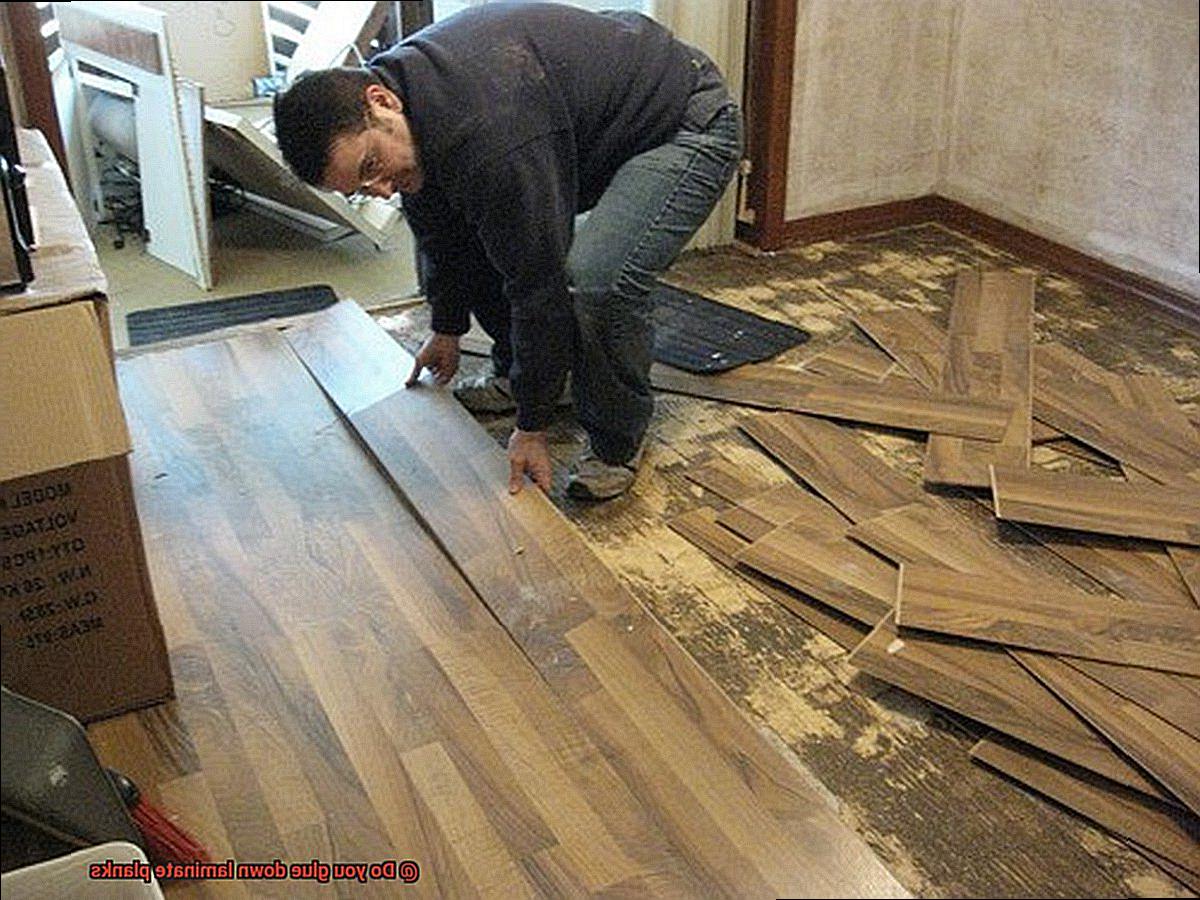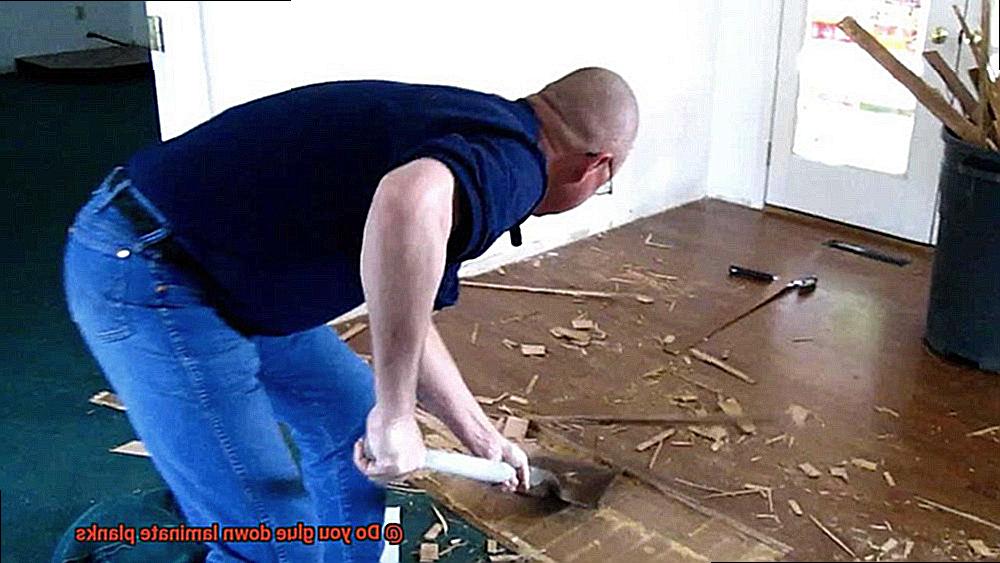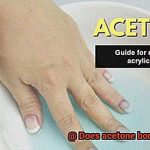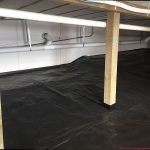Imagine stepping into a home with flooring that radiates elegance and comfort. Your eyes follow the flawless finish, and you can’t help but wonder, “Are those laminate planks glued down?” Laminate flooring is not only affordable but also known for its easy installation. However, homeowners and DIY enthusiasts alike are often left pondering this burning question.
If you’ve ever considered installing laminate flooring or are simply curious about the techniques involved, you’re in the right place. In this blog post, we’ll unravel the mystery of whether or not to glue down laminate planks. Get ready for a journey filled with clarity and understanding about this popular flooring option.
But why is this question so important? The decision to glue down laminate planks can impact your installation process, maintenance routine, and long-term durability. It’s crucial to understand the pros and cons of both adhesive and adhesive-free methods before making an informed choice.
Throughout our exploration, we’ll dive deep into the key points surrounding this flooring conundrum. We’ll discuss how gluing down laminate planks can enhance stability and reduce noise, while also addressing potential drawbacks. Armed with this knowledge, you’ll be equipped to make the right decision for your specific needs.
Whether you’re a meticulous DIY enthusiast or a homeowner seeking guidance for your upcoming renovation project, join us as we demystify the world of laminate flooring installation. Let’s untangle the complexities together and uncover the truth about gluing down laminate planks.
Types of Laminate Flooring
Contents
- 1 Types of Laminate Flooring
- 1.1 Glueless Laminate Flooring: Easy Installation, Convenient Maintenance
- 1.2 Glued Laminate Flooring: Stability and Resilience
- 1.3 Pre-Glued Laminate Flooring: The Ultimate Convenience
- 1.4 Floating Laminate Flooring: Flexible Installation, Easy Removal
- 1.5 Click-Lock Laminate Flooring: Simplicity Meets Security
- 2 Benefits of Glue-Down Laminate
- 3 Advantages of Floating Laminate
- 4 Factors to Consider When Deciding Whether to Glue Down Laminate Planks
- 5 Choosing the Right Adhesive for Glue-Down Installation
- 6 Preparing the Subfloor and Applying the Adhesive
- 7 Pressing the Laminate Planks into Place
- 8 Conclusion
Laminate flooring offers homeowners a cost-effective and durable option that beautifully replicates the look of real wood or stone. With a variety of types available, it’s crucial to understand the advantages and disadvantages of each to make an informed decision. Let’s embark on a journey through the world of laminate flooring and discover the unique features of each type.
Glueless Laminate Flooring: Easy Installation, Convenient Maintenance
The most common and user-friendly type of laminate flooring is glueless. Its click-lock system allows for effortless installation, as planks simply snap together without the need for adhesive. Perfect for DIY enthusiasts, this type of flooring can be quickly and easily installed by anyone. Additionally, if you ever need to replace or repair a damaged plank, it can be effortlessly done without disrupting the rest of the floor. The low-maintenance nature of glueless laminate flooring also makes it an ideal choice for busy households.
Glued Laminate Flooring: Stability and Resilience
For those seeking enhanced stability and durability, glued laminate flooring is an excellent option. This type requires the use of adhesive during installation, resulting in a secure connection between the planks and the subfloor. Glued laminate flooring is particularly suitable for high-traffic areas or spaces prone to moisture, such as kitchens or bathrooms. It reduces sound transmission between floors, providing a solid feel underfoot. However, keep in mind that removing or replacing individual planks can be more challenging with this type of flooring.
Pre-Glued Laminate Flooring: The Ultimate Convenience
If convenience tops your list, pre-glued laminate flooring is the way to go. These planks come with pre-applied adhesive on the edges, which activates upon contact with moisture during installation. This eliminates the need for additional adhesive and makes the installation process quicker and simpler. With pre-glued laminate flooring, you can enjoy the benefits of both glueless and glued laminate options, combining convenience and stability in one package.
Floating Laminate Flooring: Flexible Installation, Easy Removal
Floating laminate flooring offers flexibility when it comes to installation. Rather than being attached to the subfloor, it rests on top of an underlayment. The planks are connected using a click-lock system, allowing them to “float” above the subfloor. This method is perfect for uneven subfloors or areas with minor irregularities. Should you decide to change your flooring in the future, floating laminate can be easily removed without causing damage to the subfloor.
Click-Lock Laminate Flooring: Simplicity Meets Security
Similar to glueless laminate flooring, click-lock laminate uses a different interlocking system for ease of installation. The specially designed edges of the planks click into place, creating a secure fit. This type of flooring combines straightforward installation with a tight and reliable connection between the planks.
Benefits of Glue-Down Laminate
If you’re looking for a flooring option that combines stability, durability, and style, glue-down laminate is the perfect choice. Let’s explore the numerous advantages that make it a popular and practical option for both residential and commercial spaces.
First and foremost, stability is a standout feature of glue-down laminate flooring. By securely adhering the planks directly to the subfloor using a specific type of adhesive, this installation method eliminates any potential movement or shifting. The result? A rock-solid and long-lasting flooring solution that can withstand even the heaviest foot traffic. Say goodbye to squeaky floors and hello to stability that stands the test of time.
In addition to its stability, glue-down laminate also excels in sound insulation. The adhesive layer acts as a barrier, effectively reducing noise transmission between floors. Whether you have a bustling household or want to create a serene atmosphere in your living room, glue-down laminate provides excellent soundproofing properties that keep unwanted noise at bay. Enjoy a quieter and more peaceful environment in your home or office space.
Moisture resistance is another significant benefit of glue-down laminate. The tight seal created by the adhesive prevents moisture from seeping through the seams and causing damage to the flooring. This makes it an ideal choice for areas prone to humidity or moisture, such as basements or bathrooms. With glue-down laminate, you can have confidence in your flooring’s ability to withstand wet environments without compromising its beauty or functionality.
When it comes to durability, glue-down laminate truly shines. The direct bond between the planks and the subfloor ensures that they stay firmly in place, even under heavy foot traffic and daily wear and tear. This makes it an excellent option for high-traffic areas like hallways or commercial spaces where durability is essential. With glue-down laminate, you can have peace of mind knowing that your flooring will maintain its pristine condition for years to come.
In terms of aesthetics, glue-down laminate offers a seamless and smooth appearance that enhances the overall appeal of any space. Unlike some other installation methods that require underlayment or floating installation, glue-down laminate eliminates visible gaps or unevenness between the planks, resulting in a sleek and uniform look. Create a stunning and cohesive design with flooring that exudes sophistication and style.
Advantages of Floating Laminate
Prepare to be amazed by the remarkable capabilities of floating laminate flooring. This superhero of the flooring world combines versatility, durability, affordability, and style to transform any space into a stunning oasis. In this article, we will explore the incredible advantages of floating laminate that will have you rushing to embrace this trendy flooring option.
Advantage 1: Effortless Installation
Gone are the days of complex installations. Floating laminate flooring makes the process a breeze. With its ingenious interlocking system, these planks effortlessly lay over various subfloors, including concrete, plywood, or even existing flooring. Say goodbye to costly professional installers and say hello to DIY enthusiasts looking for a cost-effective solution.
Advantage 2: Flexibility and Resilience
Unlike traditional flooring, floating laminate offers unparalleled flexibility. It can expand and contract with changes in temperature and humidity, ensuring a stable and flawless floor. No more worries about unsightly buckling or warping. And with its exceptional resistance to scratches, stains, and fading, floating laminate proves its resilience against the test of time and heavy foot traffic.
Advantage 3: Design Diversity
Let your creativity soar with the vast range of styles and designs available in floating laminate flooring. From the timeless elegance of hardwood to the luxurious appeal of stone or tile, floating laminate can mimic any natural material without breaking the bank. Achieve your desired aesthetic without compromising on quality or price.
Advantage 4: Budget-Friendly Brilliance
Who says you can’t have it all? Floating laminate offers a budget-friendly alternative to high-cost flooring options like hardwood or tile. Enjoy the same breathtaking appearance while keeping more money in your pocket for other home improvements or indulgences. With floating laminate, your dreams can become a reality without draining your bank account.
Advantage 5: Comfort and Serenity
Walking on clouds may be a fantasy, but walking on floating laminate comes close. The foam underlayment provides a cushioning effect, making every step a delight. Experience a level of comfort that other hard flooring surfaces simply can’t match. Additionally, this underlayment acts as a noise insulator, reducing sound transmission between floors. Say goodbye to creaky footsteps and hello to serenity and tranquility.
Factors to Consider When Deciding Whether to Glue Down Laminate Planks
Deciding whether to glue down laminate planks requires careful consideration of several key factors. Let’s explore these factors in detail to help you make an informed decision about your flooring installation.
First and foremost, stability is crucial. Before deciding to glue down your laminate planks, assess the stability of your subfloor. If it is uneven or prone to movement, gluing down the planks can provide the necessary stability and prevent any shifting or buckling over time, especially in high-traffic areas.
Moisture resistance is another important factor to consider. If you’re planning to install laminate in areas like bathrooms or kitchens, where moisture is a constant concern, gluing down the planks can offer an additional layer of protection. The glue acts as a barrier, preventing moisture from seeping into the joints and causing damage such as swelling or warping.
Installation time is also a significant consideration. Gluing down laminate planks can be a bit more time-consuming compared to floating installations. Each plank needs to be individually glued and positioned, similar to solving a puzzle. If you’re working on a tight schedule or prefer a faster installation method, floating the planks might be a more suitable option for you.
Noise reduction is another advantage of gluing down laminate planks. If reducing noise is important to you, gluing down the planks can minimize sound transmission. The glue creates a solid bond between the planks and the subfloor, effectively reducing the hollow sound that can sometimes occur with floating installations. This can be particularly beneficial in multi-story buildings or homes with high foot traffic.
Considering future repairs or replacements is also crucial when deciding whether to glue down laminate planks. Once the planks are glued down, they are more difficult to remove and replace compared to floating installations. If there is a possibility of needing access to the subfloor in the future for repairs or modifications, floating the planks may be a more practical choice.
Lastly, always consult the manufacturer’s recommendations. Each laminate product may have specific requirements or guidelines, and it is essential to follow them to ensure a proper installation and maintain the warranty. The manufacturer understands their product best, so checking their guidelines before making a decision is highly recommended.
Choosing the Right Adhesive for Glue-Down Installation
Solving the puzzle of glue-down installation for laminate flooring requires careful consideration of several factors. From moisture resistance to drying time, each piece of the puzzle plays a crucial role in ensuring a stable, long-lasting installation. In this article, we’ll explore these factors in detail and provide you with the knowledge to choose the right adhesive for your glue-down installation project. Let’s embark on this puzzle-solving journey together.
Factor 1: Moisture Resistance:
In high-moisture areas like bathrooms or basements, opting for a moisture-resistant adhesive is a smart move. This specially formulated adhesive has the ability to withstand exposure to moisture, providing added stability and protection against water damage. Say goodbye to worries about spills or high humidity compromising your laminate flooring.
Factor 2: Low VOC Content:
Indoor air quality is of utmost importance, and choosing an adhesive with low VOC content can contribute to a healthier living space. Look for adhesives labeled as low VOC or environmentally friendly. By making this eco-conscious choice, you not only protect your indoor air quality but also contribute to a greener planet.
Factor 3: Drying Time:
Patience becomes a virtue during glue-down installations. Different adhesives have varying drying times before you can walk on the floor or place furniture on top. It’s imperative to carefully read and follow the manufacturer’s instructions regarding drying time. By allowing sufficient time for drying, you ensure a secure bond between your laminate planks and the subfloor.
Factor 4: Strong Bonding Properties:
A successful glue-down installation hinges on a strong bond between the laminate planks and the subfloor. Look for an adhesive that boasts excellent bonding properties. This ensures that your laminate flooring remains stable and secure, even under heavy foot traffic or furniture weight.
Factor 5: Easy Application:
No one wants a messy and complicated installation process. Opt for an adhesive that is easy to apply, spreading smoothly without excessive dripping or messiness. This not only saves you time and effort but also ensures a seamless installation that you can be proud of.
Factor 6: Subfloor Preparation:
Before applying the adhesive, proper subfloor preparation is key. Ensure that the subfloor is clean, dry, and free from any debris or contaminants that could hinder adhesion. Follow the manufacturer’s instructions diligently to create an optimal surface for your glue-down installation.
Preparing the Subfloor and Applying the Adhesive
Among the many steps, one stands out as the unsung hero – preparing the subfloor and applying the adhesive. Brace yourselves, for this is where true mastery lies. Grab your tools, let’s dive in.
A Clean Subfloor: Smooth Sailing Ahead.

In the quest for perfection, we must first bid farewell to any remnants of old flooring. Be it carpet or vinyl, they have no place in our masterpiece. But wait, there’s more. Sweep away debris, remove nails and staples that dare to challenge our smooth sailing. A clean subfloor is our canvas for greatness.
Level Up with Levelling Compound:
Imperfections are the enemy of flawless flooring. They taunt us with bumps and unevenness. Fear not, for we have a secret weapon – levelling compound. It possesses the power to level out even the most stubborn high spots. Sand them down or apply the compound, and watch as your floor transforms into a work of art.
Moisture Matters: A Battle Against Water Damage
Our laminate planks are resilient, but they quake at the sight of moisture. Before we proceed, inspect your subfloor for signs of water damage. Humidity and laminate planks make poor companions. Seek professional guidance when moisture lurks in the shadows. Prevention is our shield against future flooring disasters.
Adhesive: The Silent Guardian
Now, let us unveil our secret weapon – adhesive. While laminate planks typically float without it, certain situations demand its presence. Imagine high-traffic areas or stairs yearning for stability. Choose an adhesive specifically crafted for laminate flooring; let not a mismatch tarnish our masterpiece.
The Art of Application: A Sticky Symphony
Applying adhesive may seem simple, but it is an art form in its own right. Follow the manufacturer’s instructions with unwavering precision. Beware, for a single misstep can transform our symphony into a sticky mess. Spread the adhesive evenly, sparingly. Less is more, my friends. We strive for perfection, not excess.
Pressing the Laminate Planks into Place
In our quest for perfection, we have conquered the challenges of subfloor preparation and moisture prevention. Now, it’s time to unveil the secret to achieving a flawless floor – pressing those laminate planks into place. So, grab your tools and let us guide you towards creating a stunning masterpiece.
Why Pressing Matters:
Pressing the laminate planks into place is not just a mere formality – it is the critical step that ensures a stable and durable flooring surface. By securely attaching the planks to the subfloor, you can bid farewell to worries about loose or uneven flooring. Let us dive deeper into why this step is so important.
Cleanliness is Next to Flawlessness:
Before embarking on the pressing process, it is crucial to prepare your subfloor by removing any debris or dust. Picture yourself creating a pristine canvas for your masterpiece. A clean subfloor allows for proper adhesion between the planks and the subfloor, guaranteeing a strong bond that will withstand the test of time.
Tools of the Trade:
Now that our canvas is ready, we can begin pressing those planks into place. Fortunately, there are various techniques at your disposal. Let’s explore some popular methods that will help you achieve a secure and professional installation.
Flooring Roller:
One effective method involves using a flooring roller or a laminate flooring installation kit. These tools allow you to evenly distribute pressure across each plank, ensuring a tight fit and proper adhesion to the subfloor.
Imagine yourself as an artist gently smoothing out any imperfections in your canvas. Starting at one end of the plank, roll it slowly over its entire length, applying steady pressure as you go. Repeat this process for each plank until your entire floor is complete, and witness the transformation unfold before your eyes.
Tapping Block and Hammer:
Another technique involves using a tapping block and a hammer. Place the tapping block against the edge of the plank and tap it gently with the hammer to press it into place. Precision is key here – aim for accuracy rather than brute force. Be cautious not to hit too hard, as this could damage the planks or cause misalignment. With each tap, you bring your vision closer to reality.
PoUFqoVXs-E” >
Conclusion
When it comes to laminate planks, the question of whether or not to glue them down often arises. The answer, however, is not a simple one. While some laminate flooring does require adhesive for installation, many modern laminate planks are designed to be installed without glue.
Gluing down laminate planks can have its advantages. It can provide added stability and reduce the risk of movement or shifting over time. This can be particularly beneficial in high-traffic areas or rooms with heavy furniture. Additionally, glued-down laminate planks may offer better sound insulation and a more solid feel underfoot.
On the other hand, opting not to use glue can also have its benefits. Floating installation, where the planks are not adhered to the subfloor but instead click together using a tongue-and-groove system, allows for easier installation and potential future repositioning or removal if needed. This flexibility can be advantageous when considering renovations or changes in flooring preferences.
Ultimately, the decision of whether to glue down laminate planks depends on various factors such as personal preference, budget constraints, and specific product recommendations from manufacturers. It’s important to carefully read and follow the installation instructions provided by the manufacturer to ensure proper installation and warranty coverage.
In conclusion, while gluing down laminate planks can offer certain advantages in terms of stability and sound insulation, it is not always necessary or recommended. Floating installation provides flexibility and ease of installation that may be more suitable for certain situations.






